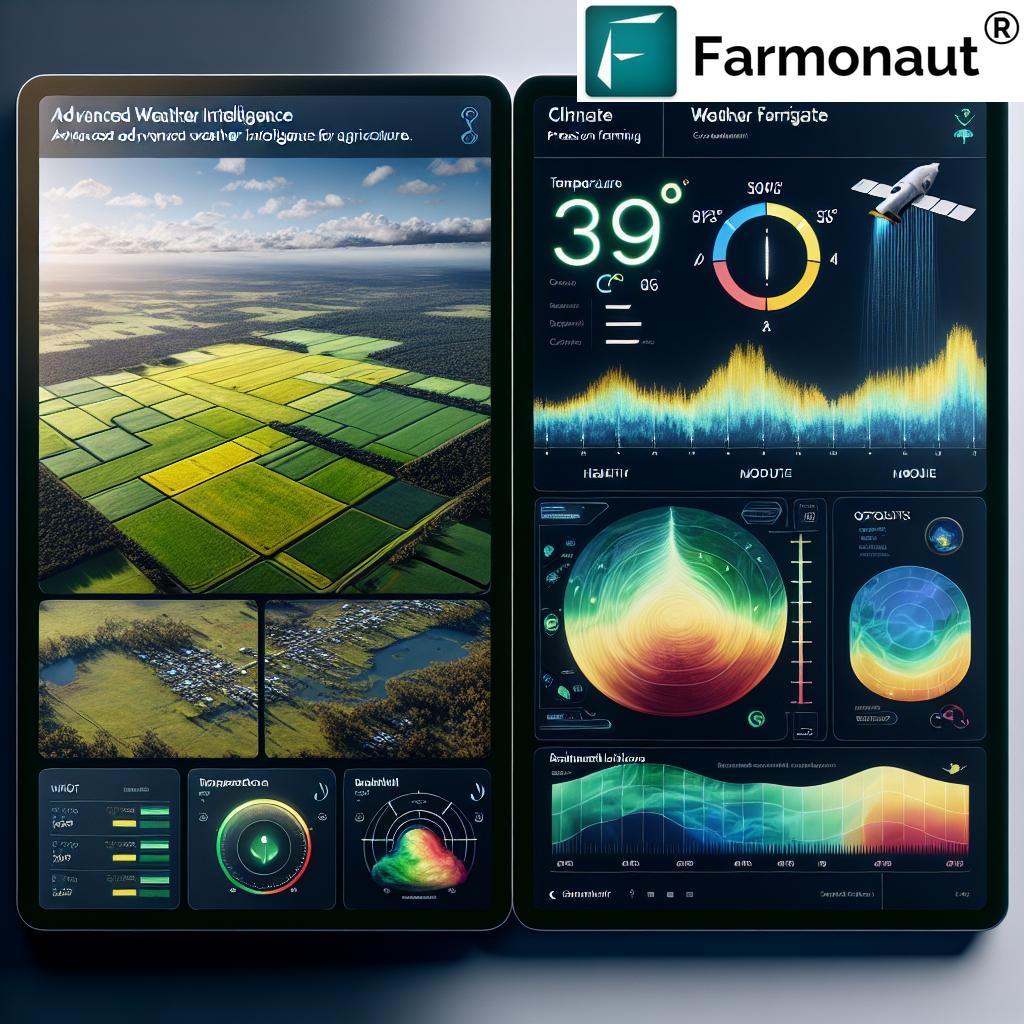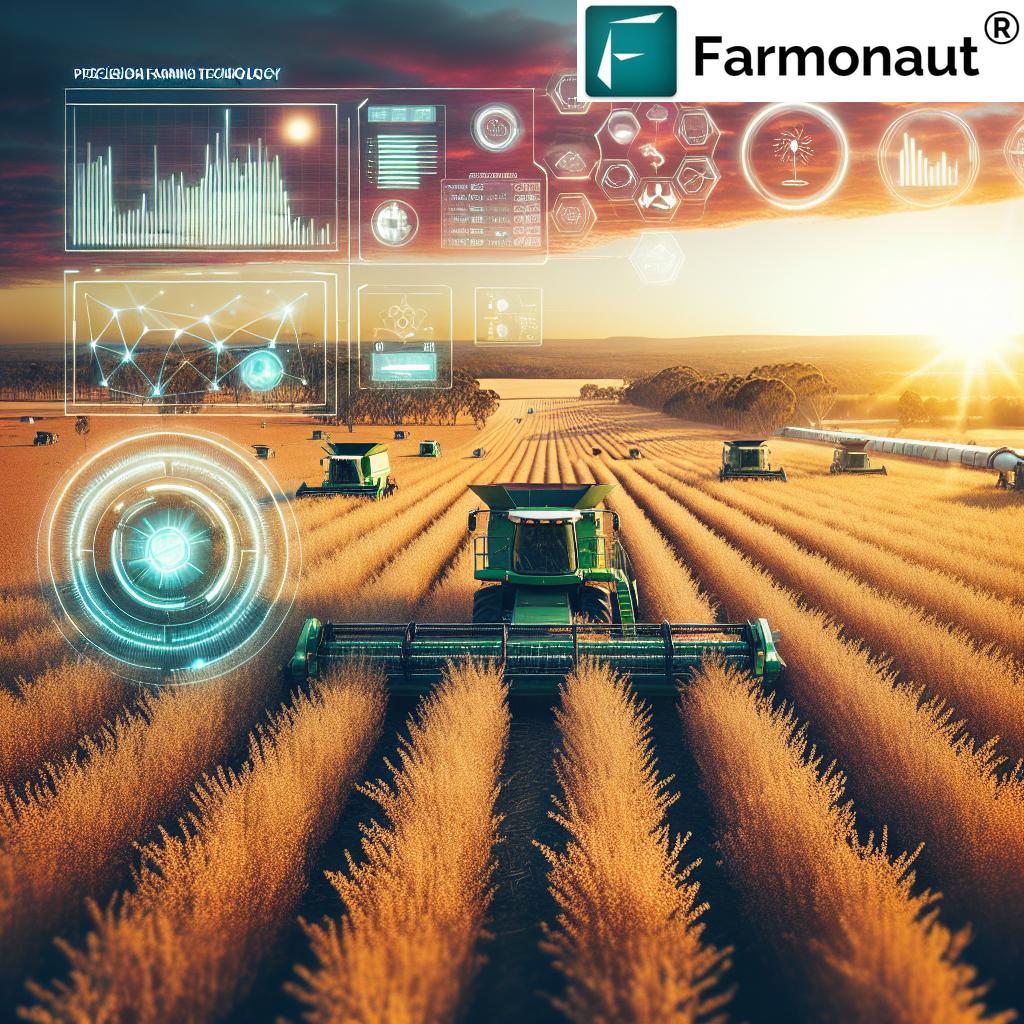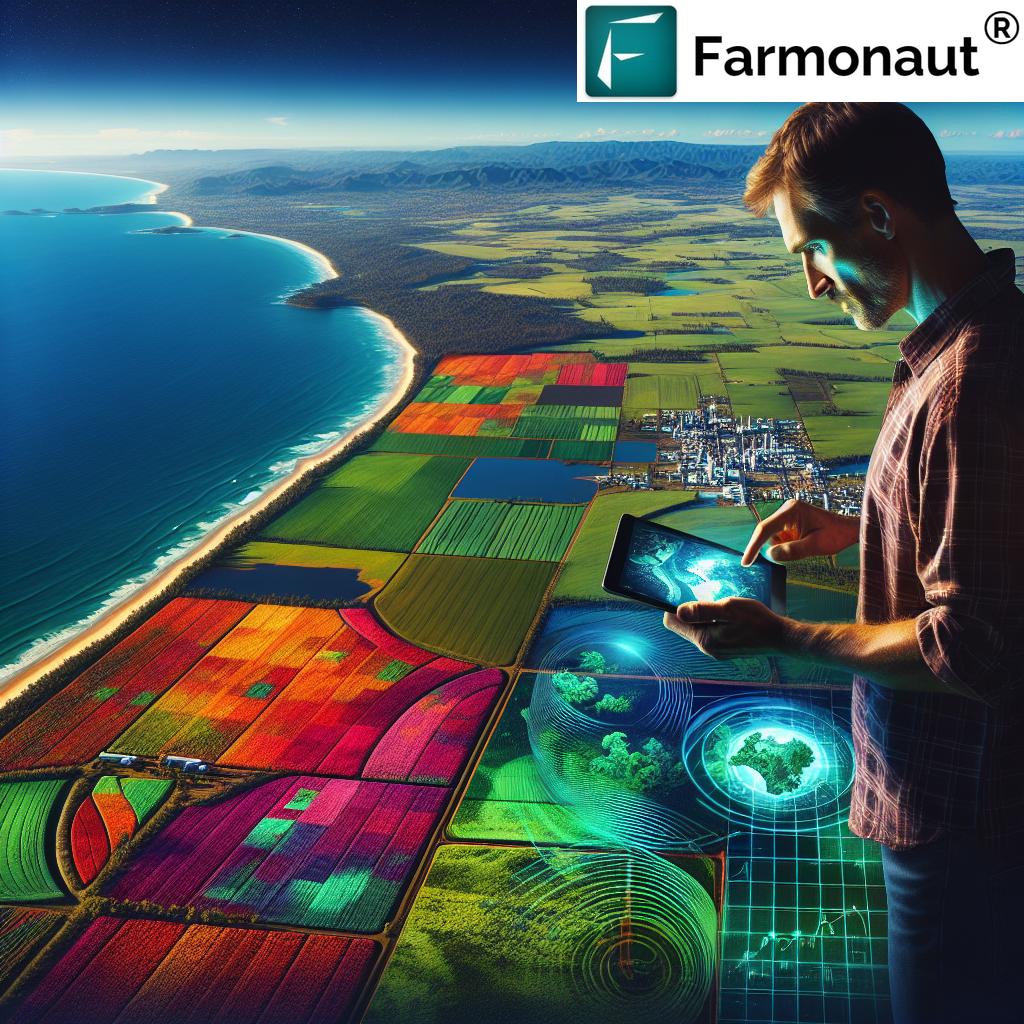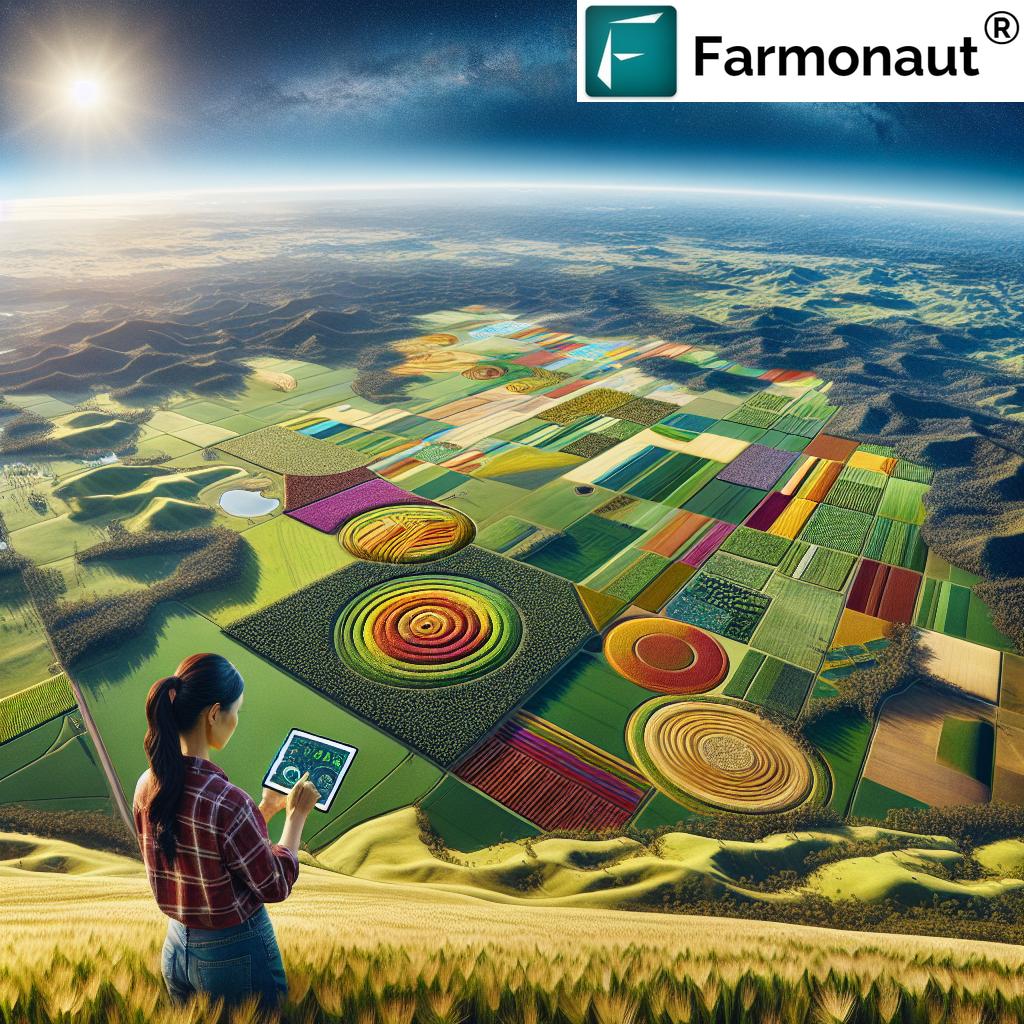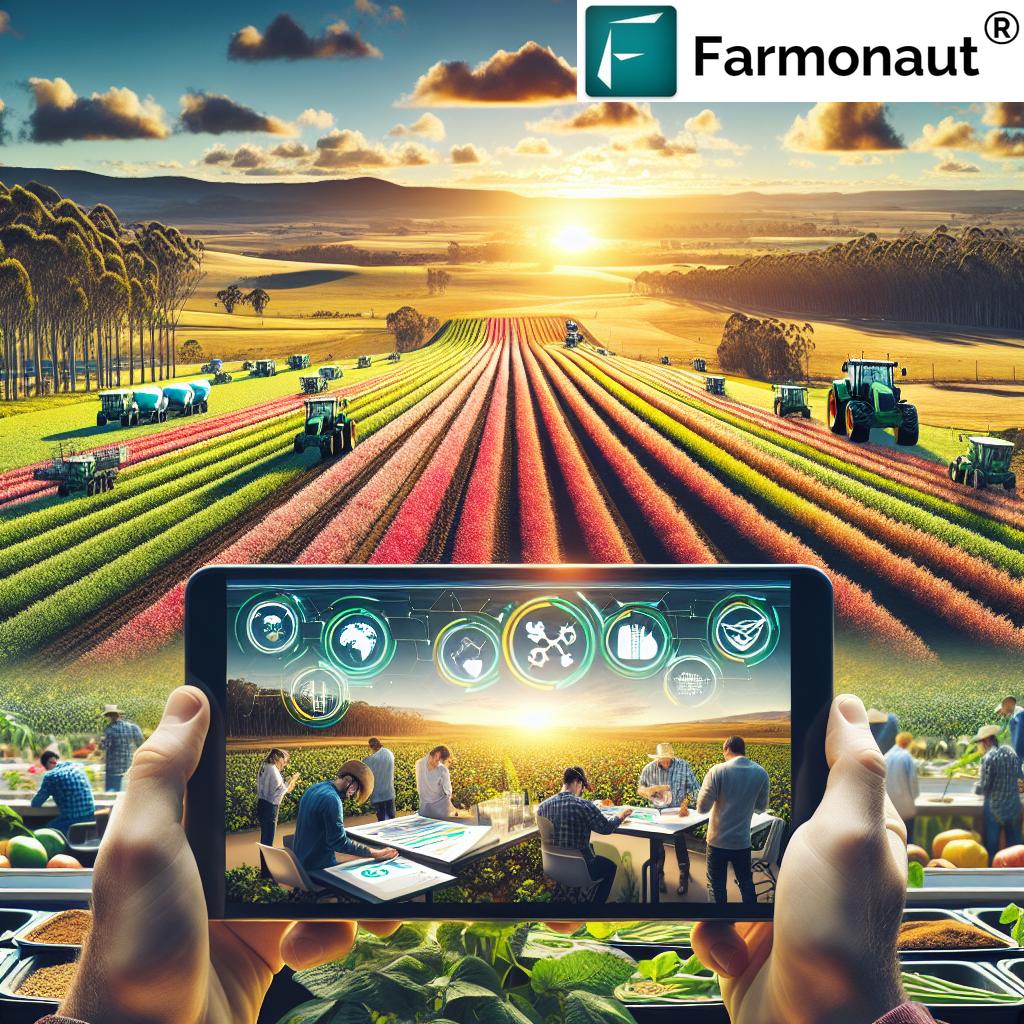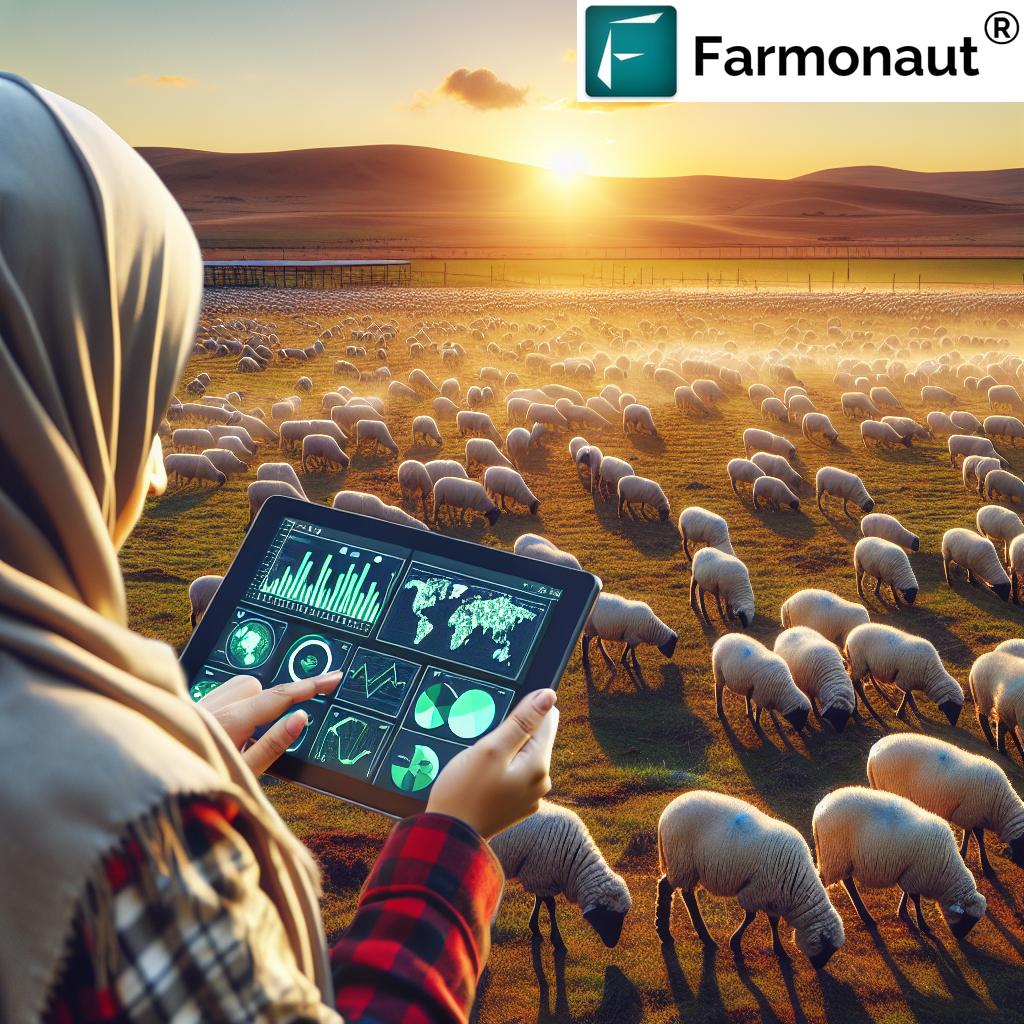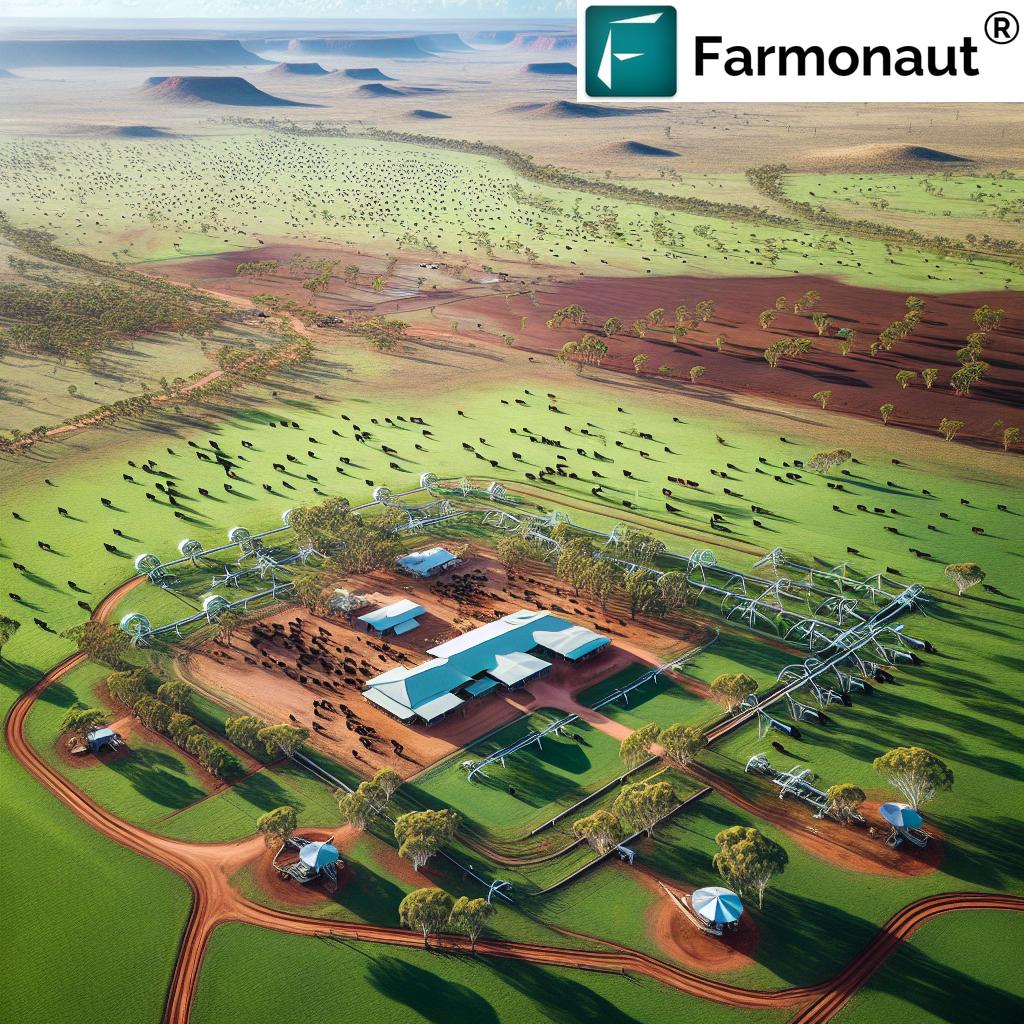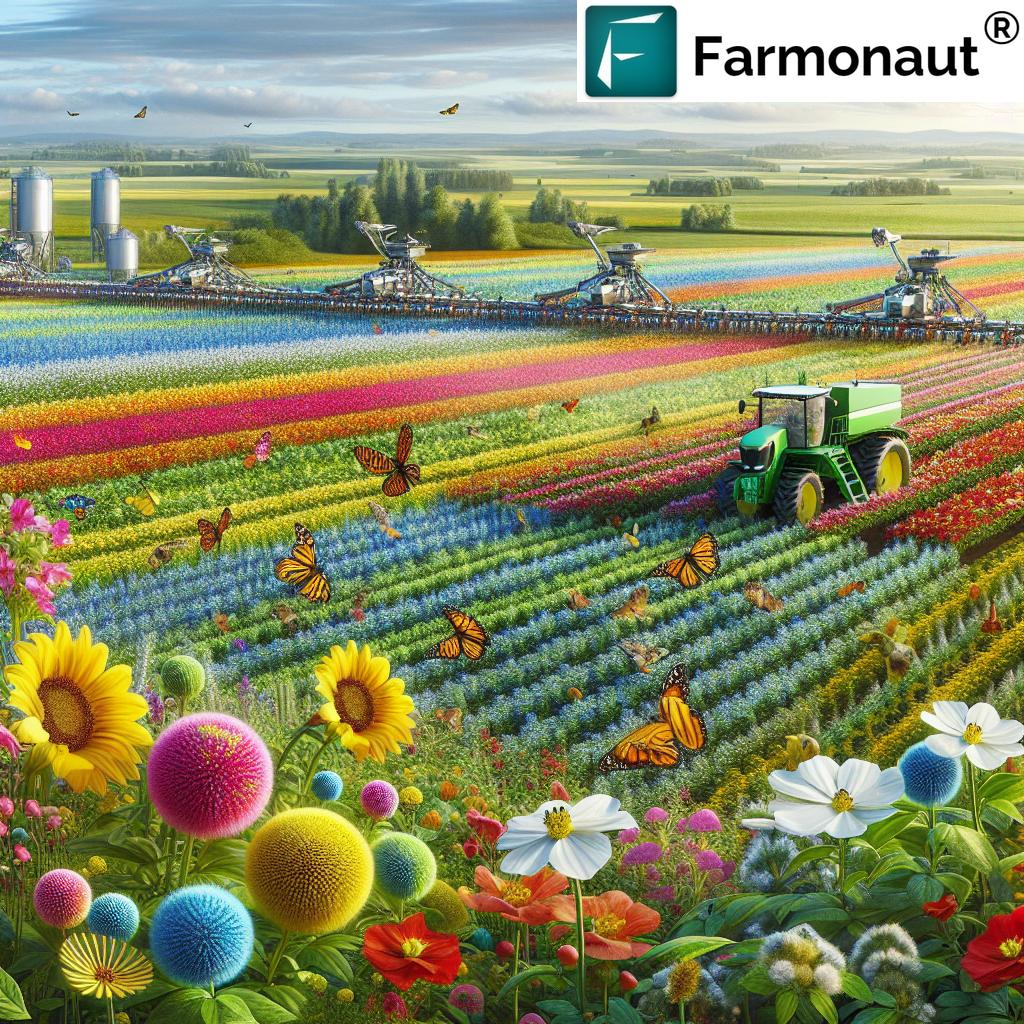Sustainable Farming Meets Artisanal Craftsmanship: Margaret River’s Agricultural Renaissance
“Margaret River’s sustainable farming pioneer transformed a degraded property into a thriving smallholding with diverse livestock and revegetation projects.”
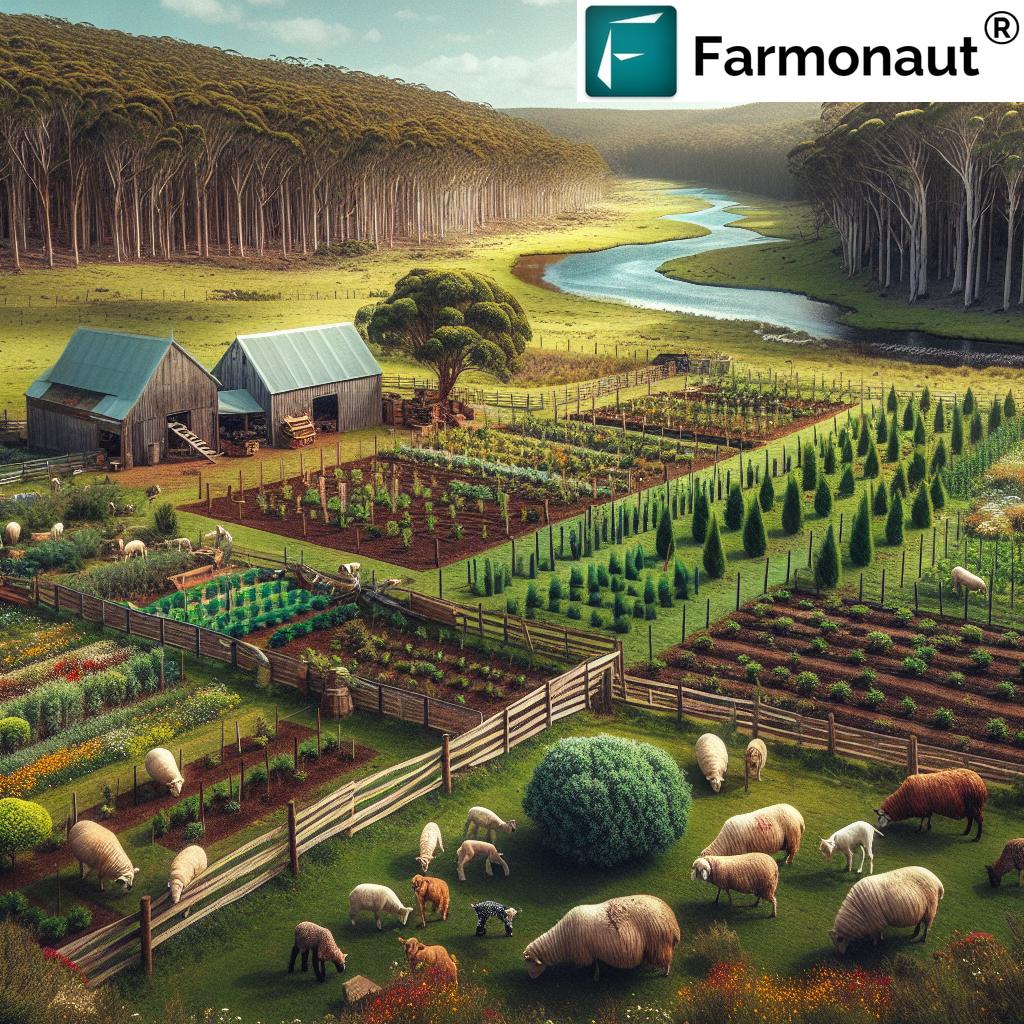
In the heart of Australia’s Margaret River region, a remarkable transformation is taking place. We’re witnessing the birth of an agricultural renaissance that blends sustainable farming practices with artisanal craftsmanship. This inspiring journey showcases how innovative approaches to smallholding livestock management and agricultural land rehabilitation can breathe new life into degraded properties, creating a thriving ecosystem that benefits both the environment and the local community.
As we delve into this captivating story, we’ll explore how a former corporate professional turned sustainable farming pioneer has embraced agricultural innovation, transforming a once-neglected piece of land into a vibrant smallholding. This tale of creativity and entrepreneurship serves as a beacon of hope for rural landscapes across Australia and beyond.
The Journey Begins: From Corporate Life to Sustainable Farming
Our story begins with Cath Miller, a visionary who traded her corporate career for the challenges and rewards of sustainable farming in Margaret River. Driven by a passion for the environment and a desire to make a tangible difference, Cath embarked on a journey that would not only transform her life but also the very land she now calls home.
Upon acquiring a degraded property in the region, Cath faced the daunting task of rehabilitating the land while simultaneously developing a sustainable farming model. Her approach was holistic, focusing on:
- Implementing diverse livestock management strategies
- Initiating ambitious revegetation projects
- Cultivating plantation trees for long-term sustainability
- Exploring artisanal craftsmanship through wool production and weaving
- Developing value-added products like goat milk soap
This multifaceted approach not only aimed to restore the land’s ecological balance but also to create a viable and sustainable business model that could serve as an inspiration for other aspiring farmers in the region.
Sustainable Farming Practices: The Cornerstone of Success
At the heart of Cath’s agricultural renaissance lies a commitment to sustainable farming practices. These methods not only nurture the land but also ensure long-term viability and resilience in the face of changing climate conditions. Let’s explore some of the key practices implemented on this innovative smallholding:
| Practice | Description | Environmental Impact | Economic Benefit |
|---|---|---|---|
| Diverse Livestock Management | Raising goats and sheep in a rotational grazing system | Improves soil health, reduces erosion | Multiple income streams, reduced feed costs |
| Revegetation Projects | Planting native species to restore biodiversity | Enhances habitat, increases carbon sequestration | Potential for carbon credits, improved land value |
| Plantation Tree Cultivation | Growing timber species for future harvest | Provides windbreaks, reduces soil erosion | Long-term timber income, diversified revenue |
| Wool Production | Sustainable sheep farming for high-quality wool | Promotes natural fiber use, reduces synthetic reliance | Premium prices for artisanal wool products |
| Goat Milk Soap Making | Crafting natural soaps from goat milk | Reduces chemical use, supports animal welfare | Value-added product, higher profit margins |
These sustainable farming practices form the foundation of Cath’s agricultural enterprise, demonstrating that it’s possible to balance ecological responsibility with economic viability.
Livestock Management: A Balanced Approach
One of the most striking aspects of Cath’s farm is her approach to livestock management. By raising both goats and sheep, she’s created a diverse and resilient farming system that maximizes land use efficiency while minimizing environmental impact.
Goats, known for their hardiness and adaptability, play a crucial role in managing vegetation on the property. Their browsing habits help control invasive species and promote the growth of native plants. Meanwhile, the sheep contribute to the farm’s wool production, forming the basis of Cath’s artisanal textile endeavors.
This balanced approach to livestock management offers several benefits:
- Improved pasture management through rotational grazing
- Natural weed control, reducing the need for herbicides
- Diversified income streams from meat, wool, and dairy products
- Enhanced soil fertility through natural fertilization
By carefully managing her livestock, Cath has created a system that not only produces high-quality products but also contributes to the overall health of the land.
Revegetation and Plantation Projects: Investing in the Future
Recognizing the importance of long-term sustainability, Cath has implemented extensive revegetation projects across her property. These initiatives serve multiple purposes:
- Restoring native habitats for local flora and fauna
- Improving soil structure and preventing erosion
- Creating windbreaks to protect crops and livestock
- Increasing carbon sequestration to combat climate change
In addition to revegetation efforts, Cath has also established plantation trees on the property. These carefully selected species not only contribute to the farm’s biodiversity but also represent a long-term investment in sustainable timber production.
The combination of revegetation and plantation projects demonstrates a holistic approach to land management that balances immediate needs with future sustainability.
Artisanal Craftsmanship: From Farm to Textile
“Combining traditional skills with modern sustainability, this farm produces artisanal products like wool, woven textiles, and goat milk soap.”
One of the most innovative aspects of Cath’s agricultural enterprise is her focus on artisanal craftsmanship, particularly in the realm of farm-to-textile production. By processing her own wool and creating handcrafted textiles, Cath has added significant value to her farm’s raw materials.
The farm-to-textile process involves several steps:
- Sheering the sheep and sorting the wool
- Cleaning and carding the wool to prepare it for spinning
- Hand-spinning the wool into yarn
- Dyeing the yarn using natural, plant-based dyes
- Weaving the yarn into beautiful, unique textiles
This hands-on approach allows Cath to create truly unique, high-quality products that tell the story of her farm and its sustainable practices. From cozy blankets to stylish scarves, each piece represents a connection between the land, the animals, and the artisan’s skill.

Goat Milk Soap: A Natural Extension of Sustainable Farming
In addition to textile production, Cath has expanded her artisanal offerings to include goat milk soap making. This value-added product not only provides an additional income stream but also showcases the versatility of goat farming.
Goat milk soap offers several benefits:
- Natural moisturizing properties for skin care
- Gentle cleansing suitable for sensitive skin
- A sustainable alternative to commercial, chemical-laden soaps
- A unique, locally-produced product for the region
By creating these artisanal products, Cath has not only diversified her farm’s income but also contributed to the rich tapestry of local craftsmanship in the Margaret River region.
Embracing Technology: The Digital Farm Diary
In today’s digital age, even traditional farming practices can benefit from modern technology. Recognizing this, Cath has embraced the concept of a digital farm diary to document her journey and share her experiences with a wider audience.
The digital farm diary serves several purposes:
- Tracking progress and recording important farm events
- Sharing knowledge and insights with other farmers
- Connecting with consumers and building brand awareness
- Creating a valuable resource for future generations of farmers
By leveraging digital tools, Cath has been able to extend the reach of her sustainable farming message far beyond the boundaries of her property.
For farmers looking to embrace digital technologies in their operations, tools like Farmonaut can be invaluable. Farmonaut offers advanced satellite-based farm management solutions that can help optimize crop health, improve resource management, and enhance overall farm productivity.
Farmers can access Farmonaut’s services through their web application or mobile apps:
Agritourism: Sharing the Sustainable Farming Experience
As Cath’s sustainable farming practices gained recognition, she recognized an opportunity to contribute to agritourism in Margaret River. By opening her farm to visitors, she’s created a unique educational experience that showcases the benefits of sustainable agriculture and artisanal craftsmanship.
The agritourism offerings include:
- Guided tours of the farm, highlighting sustainable practices
- Workshops on wool spinning and weaving
- Demonstrations of goat milk soap making
- Tastings of farm-produced products
- Educational programs on revegetation and biodiversity
These agritourism initiatives not only provide an additional income stream for the farm but also play a crucial role in educating the public about sustainable farming practices and the importance of supporting local producers.
Building Community: The Regional Producers Association
Recognizing the power of collaboration, Cath has become an active member of the regional producers association. This network of local farmers and artisans provides a platform for knowledge sharing, mutual support, and collective marketing efforts.
The benefits of this community-focused approach include:
- Shared resources and expertise
- Collaborative marketing initiatives
- Stronger representation in regional decision-making
- Enhanced opportunities for agritourism development
By working together, these producers are not only strengthening their individual businesses but also contributing to the overall resilience and sustainability of the Margaret River agricultural sector.
Challenges and Opportunities in Sustainable Farming
While Cath’s journey in sustainable farming has been largely successful, it hasn’t been without its challenges. Some of the obstacles faced include:
- Initial skepticism from traditional farmers in the region
- The learning curve associated with new farming practices
- Balancing production with conservation efforts
- Navigating the complexities of artisanal product marketing
However, these challenges have also presented opportunities for innovation and growth. By addressing these issues head-on, Cath has not only improved her own farming practices but also paved the way for other farmers in the region to adopt more sustainable approaches.
The Future of Sustainable Farming in Margaret River
As we look to the future, the success of Cath’s sustainable farming venture offers a glimpse of what’s possible for agriculture in Margaret River and beyond. The combination of traditional farming wisdom with modern sustainability practices and artisanal craftsmanship presents a viable model for small-scale farmers looking to thrive in today’s competitive agricultural landscape.
Key trends that are likely to shape the future of sustainable farming in the region include:
- Increased adoption of regenerative agriculture practices
- Growing consumer demand for locally-produced, artisanal products
- Expansion of agritourism opportunities
- Greater integration of digital technologies in farm management
- Strengthened collaborations between farmers, artisans, and local businesses
As these trends continue to evolve, farms like Cath’s will play a crucial role in demonstrating the viability and benefits of sustainable, small-scale agriculture.
Conclusion: A Model for Agricultural Innovation
Cath Miller’s journey from corporate professional to sustainable farming pioneer in Margaret River serves as an inspiring example of what’s possible when passion, innovation, and commitment to sustainability come together. Her success in transforming a degraded property into a thriving smallholding showcases the potential for agricultural land rehabilitation and the power of combining traditional farming practices with modern sustainability concepts.
Through diverse livestock management, ambitious revegetation projects, artisanal craftsmanship, and a commitment to community engagement, Cath has not only created a successful and sustainable farming enterprise but also contributed to the revitalization of the local agricultural landscape.
As we face the challenges of climate change and increasing demand for sustainable food production, stories like Cath’s offer hope and practical insights for the future of farming. They demonstrate that with creativity, determination, and a holistic approach to land management, it’s possible to create agricultural systems that are both environmentally responsible and economically viable.
The Margaret River agricultural renaissance, exemplified by Cath’s farm, points the way towards a future where farming, artisanal craftsmanship, and environmental stewardship go hand in hand, creating resilient rural communities and nurturing the land for generations to come.
Embracing Technology in Sustainable Farming
While Cath’s approach to farming emphasizes traditional practices and artisanal craftsmanship, it’s important to note the role that modern technology can play in supporting sustainable agriculture. Tools like Farmonaut offer valuable resources for farmers looking to optimize their operations and improve sustainability.
Farmonaut provides advanced satellite-based farm management solutions that can help farmers:
- Monitor crop health in real-time
- Optimize resource usage, including water and fertilizers
- Track weather patterns and predict potential risks
- Improve overall farm productivity and sustainability
For more information on how Farmonaut can support sustainable farming practices, visit their API Developer Docs or explore their API for integration possibilities.
FAQs About Sustainable Farming in Margaret River
Q: What makes Margaret River suitable for sustainable farming?
A: Margaret River’s diverse landscape, Mediterranean climate, and rich soil make it ideal for various agricultural practices. The region’s commitment to environmental conservation also supports sustainable farming initiatives.
Q: How does sustainable farming benefit the local community?
A: Sustainable farming practices preserve the natural environment, create local job opportunities, produce high-quality food and artisanal products, and contribute to the region’s tourism appeal through agritourism initiatives.
Q: Can small-scale farms be economically viable?
A: Yes, small-scale farms can be economically viable through diversification, value-added products, direct-to-consumer sales, and participation in agritourism. Cath Miller’s farm demonstrates how combining farming with artisanal craftsmanship can create a successful business model.
Q: What role does technology play in sustainable farming?
A: Technology can significantly enhance sustainable farming practices by providing real-time data on crop health, optimizing resource use, and improving overall farm management. Tools like Farmonaut offer valuable support for farmers embracing sustainable methods.
Q: How can consumers support sustainable farming in Margaret River?
A: Consumers can support sustainable farming by purchasing locally produced goods, participating in farm tours and workshops, and advocating for policies that support small-scale, sustainable agricultural practices.





